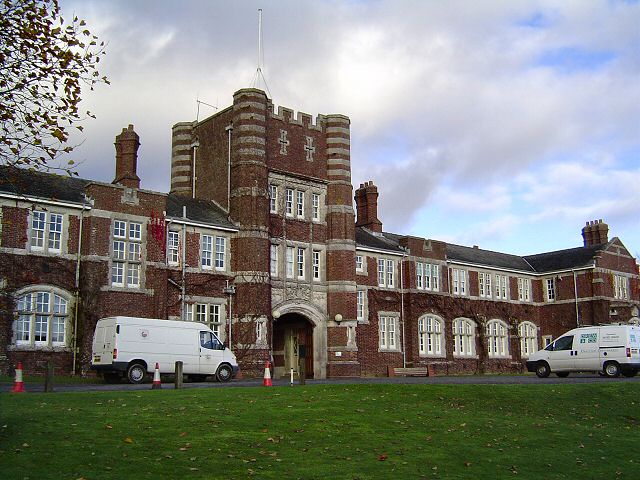|
Ernest Charles Large
Ernest Charles Large (24 June 1902, Parsons Green, London Borough of Hammersmith and Fulham – 25 August 1976) was an English engineer, novelist, mycologist, and phytopathologist, known as a pioneer of phytopathometry. For the academic year 1960–1961 he was the president of the British Mycological Society. Biography After education at Clark's College in Putney, London and then at St Paul's School, London, he became in 1919 an apprentice at the engineering firm Gwynnes Pumps in Hammersmith, London. In the same year he became an evening student at Battersea Polytechnic Institute in London (which eventually became the University of Surrey) and graduated there in 1924 with a B.Sc. in engineering. For the four years following his graduation, he worked as a daytime engineer and studied at Battersea Polytechnic as an evening student of electrical engineering. At Battersea Polytechnic, he earned money as a demonstrator to evening classes in mechanical engineering. In 1928 Large was ... [...More Info...] [...Related Items...] OR: [Wikipedia] [Google] [Baidu] |
Parsons Green
Parsons Green is a mainly residential district in the London Borough of Hammersmith and Fulham. The Parsons Green (The green), Green itself, which is roughly triangular, is bounded on two of its three sides by the New King's Road section of the King's Road, A308 road and Parsons Green Lane. The wider neighbourhood is bounded by the Harwood and Wandsworth Bridge Roads, A217 road to the east and Munster Road to the west, while the Fulham Road, A3219 road may be said to define its northern boundary. Its southern boundary is less clearly defined as it merges quickly and imperceptibly with the Sulivan Court Estate and Hurlingham. At its historic centre lie two open spaces, the Parsons Green (The green), Green itself and Eel Brook Common. The name stems from the original village green, after the former residence of the rectors of Fulham Parish. It is one of the Conservation area (United Kingdom), Conservation areas in Hammersmith and Fulham, that extends from the borough boundary in ... [...More Info...] [...Related Items...] OR: [Wikipedia] [Google] [Baidu] |
Seale-Hayne Agricultural College
Seale-Hayne College was an agricultural college in Devon, England, which operated from 1919 to 2005. It was the only agricultural college in the United Kingdom whose buildings were purpose designed and built. It was located 3 miles from Newton Abbot. The college was established in accordance with the will of Charles Seale Hayne (1833-1903), a Liberal politician who was a Devon land-owner. The college was built between 1912 and 1914, but its opening was delayed by the start of the First World War. During the war it served as a training centre for Land Girls Land Girls or variants may refer to: * Women's Land Army (World War II) * Women's Land Army (World War I) *'' The Land Girls'', a 1998 film * ''Land Girls'' (TV series), 2009 {{disambiguation ..., and in 1918 and 1919 it operated as a military neurasthenic hospital for the treatment of soldiers suffering from shell shock. The first students arrived in 1920. During the Second World War the college was used for the trainin ... [...More Info...] [...Related Items...] OR: [Wikipedia] [Google] [Baidu] |
